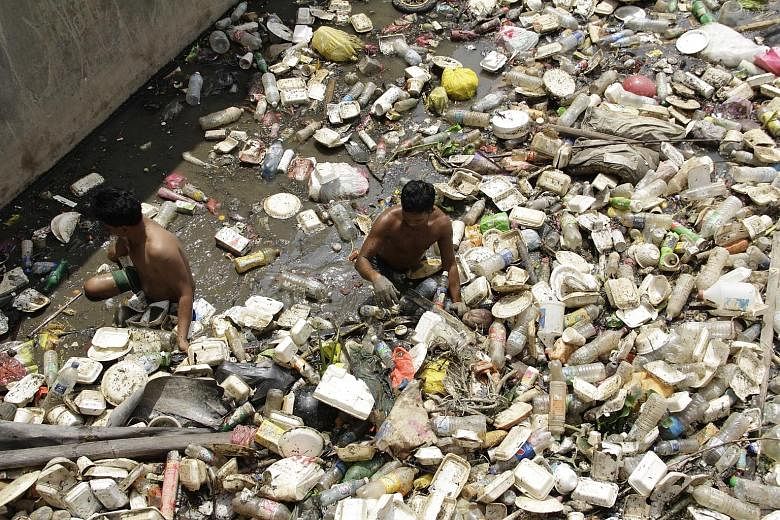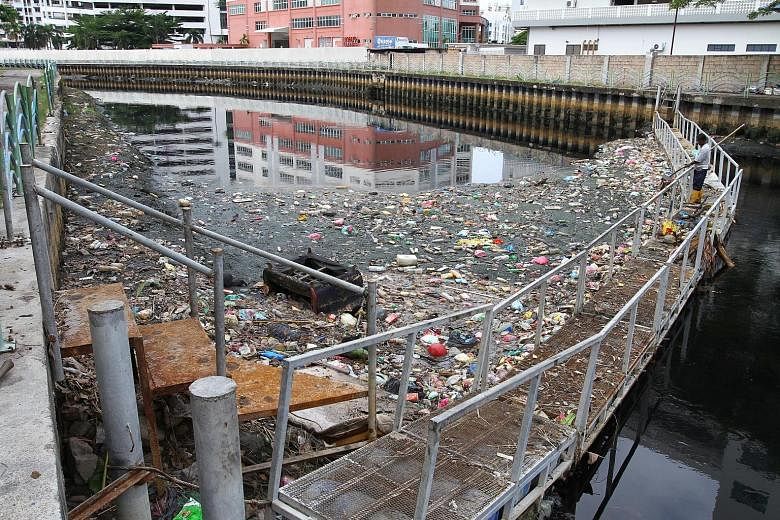IPOH • Two thousand, two hundred tonnes of rubbish - equivalent to the combined weight of more than 300 adult African elephants - is dumped into rivers, drains and waterways of Malaysia every month.
In the 110km Sungai Klang, the main river that meanders through downtown Kuala Lumpur and Greater KL, 700kg of rubbish is thrown every day despite 10 years of "clean river" campaigns, said Datuk Hanapi Mohamad Noor, a former director at the government's Department of Irrigation and Drainage. The river consists of Sungai Klang and Sungai Gombak which merge into one and contains 13 major tributaries.
He said the cleaning of rivers needed to be carried out in a systematic programme all year long with an annual budget of RM100 million (S$33.4 million), instead of having occasional campaigns.
-
97%
-
Amount of water used for Malaysia's domestic, industrial and irrigation purposes that comes from rivers and reservoirs.
And litterbug laws must be enforced against offenders.
"Despite numerous programmes and campaigns by the authorities, including the Love Our River campaign launched more than 10 years ago, not much progress has been achieved," Mr Hanapi, who is vice-chairman of the Malaysian Water Partnership organisation, said in an interview.
"The campaign was to create public awareness and sensitivity towards the need for cleaner rivers. Yet, the responsibility is always left to the authorities without much support from the people."
He noted that Singapore is more successful at curbing waterway pollution because of strict enforcement. "Singapore is seen to be successful in maintaining a cleaner environment, including the drains and rivers, due to its strict enforcement of laws," he said.
Malaysians need to be reminded that the water they drink mostly comes from river water that needs to be cleaned - 97 per cent of the water used for domestic, industrial and irrigation purposes is derived from from surface water in rivers and reservoirs.
"If more people realise that the water they are drinking comes from rivers, they may think twice before polluting it. The cost for water treatment can get really high. This could even lead to higher water tariffs," Mr Hanapi added.
A check by The Star downstream of Sungai Batu - one of the tributaries of Sungai Klang - found heaps of rubbish at a log boom that stops the garbage from flowing further downstream.

Among items caught by the boom were motorcycle helmets, footballs, tree branches, empty tins and a kayak.
According to a spokesman for the Sungai Klang Basin office of the Department of Drainage and Irrigation, such items are a common sight at the log boom.
"We have even found things like sofa sets, mattresses, refrigerators, washing machines and motorcycle frames," he said.
"Many take the easy way out by dumping everything into rivers, even though they know very well that this will pollute our rivers."
The Malaysian government in 2012 started the River Of Life project to clean up Sungai Klang, especially the 10.7km stretch in downtown Kuala Lumpur.
Included in the plan was the building of two sewage treatment plants for a population of 750,000 each, and the upgrading of another 15 sewage plants, previous reports said.
Five wastewater treatment plants for wet markets have been installed, as well as more than 360 pollutant traps for floating rubbish and 231 grease traps at foodcourts.
Mr Hanapi said the government has allocated RM3 billion from 2011 for the River Of Life project, until 2020.
THE STAR/ASIA NEWS NETWORK


